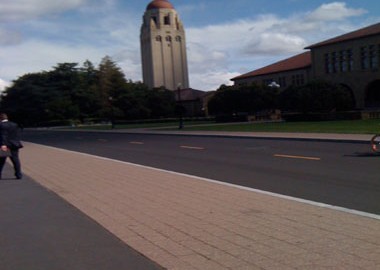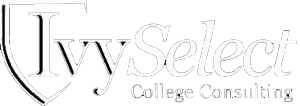More Selective Than the Ivy League?
It’s difficult to gain admission to any of the eight Ivy League institutions and it gets even more difficult every year. Last year, the acceptance rates among the Ivies ranged from 5.2% at Harvard to 13.96% at Cornell. However, there are other U.S. colleges and universities that are as selective or more selective than the Ivies.
Of course, the degree of exclusivity of an institution isn’t the only criterion or even the most important one by which to judge the quality of education provided by a college or university — far from it! We use it only to estimate the probability of acceptance of even highly qualified applicants. The most fundamental criterion by which to assess a school’s suitability for a student is how well that institution fits the student’s unique set of preferences, talents, and goals.
Let’s establish a baseline from the Ivy League statistics reported for the admissions cycle of 2015-16 (Class of 2020), the most recent data set available.
Table A: Ivy League Admissions for the Class of 2020
| Ivy League Institution | Applied | Admitted | % Admitted |
| Harvard University | 39,041 | 2,037 | 5.20 |
| Columbia University | 36,292 | 2,193 | 6.04 |
| Yale University | 31,455 | 1,972 | 6.27 |
| Princeton University | 29,303 | 1,894 | 6.46 |
| Brown University | 32,390 | 2,919 | 9.01 |
| University of Pennsylvania | 38,918 | 3,661 | 9.41 |
| Dartmouth College | 20,675 | 2,176 | 10.52 |
| Cornell University | 44,496 | 6,277 | 13.96 |
| Averages = | 273,040 | 23,129 | 8.47 |
There are seven well-known colleges and universities that are more selective than some or all of the Ivy League schools. Let’s review them and compare their admissions rates with the Ivy League schools.
Stanford University:
Stanford University is a private institution that was founded in 1885. It has a total undergraduate enrollment of 6,999 and is located in a suburban setting south of San Francisco. Stanford, the most selective university in the United States, had an admissions rate of 4.69% for the Class of 2020, lower than all Ivy League schools.
University of Chicago:
This urban, 125-year-old institution, funded by John D. Rockefeller on land donated by Marshall Fields, is in the Hyde Park community on the south side of Chicago. Its admissions rate of 7.6% is below the Ivy League average and lower than the rates for Brown, Penn, Dartmouth, and Cornell.
Massachusetts Institute of Technology:
MIT’s urban campus in Cambridge, Massachusetts, gives students ready access to Boston just across the Charles River. The school has a famously competitive selection process in which 25% of applicants earn perfect scores on their math SAT. There’s a challenging workload for undergraduates that includes physics, biology, chemistry, and calculus as required courses. MIT’s professors are among the best in the world, with nine Nobel Prize winners currently serving on the faculty. Like Chicago, MIT’s admissions rate of 7.6% is below the Ivy League average and lower than the rates for Brown, Penn, Dartmouth, and Cornell.
United States Naval Academy:
The United States Naval Academy is a federal educational institution that was founded in 1845. It has a total undergraduate enrollment of 4,525 in an urban setting. Commonly referred to as Navy or Annapolis, it’s located in Annapolis, the capitol of Maryland, where the Severn River meets the Chesapeake Bay about 33 miles east of Washington and 25 miles southeast of Baltimore. Graduates from Navy earn a Bachelor of Science degree and must go on to serve six years on active duty in the Navy. Applicants apply directly to the academy and must receive a nomination from a member of Congress. Navy’s admissions rate of 7.9% is below the average for the Ivy League and lower than the rates for Brown, Penn, Dartmouth, and Cornell.
California Institute of Technology:
Caltech, as the institution is known, focuses on science and engineering. It’s in a suburban setting in Pasadena, California, 11 miles northeast of Los Angeles. Even by the standards of the most highly selective schools, admission at Caltech is demanding. Recently admitted students scored an average of nearly 1600 on their SATs—higher than MIT or Stanford. Caltech admits 7.9% of applicants, which is below the average for the Ivy League and lower than the rates for Brown, Penn, Dartmouth, and Cornell.
United States Military Academy:
The United States Military Academy, also known as West Point or Army, is a federal educational institution that was founded in 1802. It has a total undergraduate enrollment of 4,348. Its setting is suburban, located 50 miles north of New York City on the cliffs above the west bank of the Hudson River. Students are U.S. Army officers in training. They graduate with a Bachelor of Science degree. The Army, in return for a six-year, active duty obligation, funds the tuition of students. Army’s admissions rate of 9.5% is above the average for the Ivy League but lower than the rates for Dartmouth and Cornell.
Claremont-McKenna College:
Claremont McKenna College is a private institution that was founded in 1946. It has a total undergraduate enrollment of 1,328 in a suburban setting in the town of Claremont, California, at the foot of the San Gabriel Mountains 35 miles east of Los Angeles. The school is part of the seven-college consortium known as The Claremont Colleges, which also includes Scripps, Pomona, Harvey Mudd, and Pitzer Colleges, Claremont Graduate University, and Keck Graduate Institute of Applied Life Sciences. Students can take classes at any of the member institutions as well as enjoy the social activities, athletics, and dining services at the five undergraduate and two graduate colleges. The College’s admissions rate of 10.8% is above the average for the Ivy League but lower than the rate for Cornell.
Families and high school students shouldn’t be misled by the name of our college admissions consulting firm — IvySelect. We don’t focus solely on the Ivy League. The admissions processes in the Ivy League and other highly selective and selective colleges are remarkably similar. However, there are subtle deviations in institutional processes and acceptance criteria. It’s the awareness of these deviations and the knowledge of how best to satisfy them that makes IvySelect’s college counseling services invaluable to ambitious students.
Many of IvySelect’s students aim for the Ivies, but we’re equally effective in assisting students whose primary target is a school that is more selective than the Ivy League, like Stanford, as selective as the Ivies, like Chicago or MIT, or less selective, like Bucknell, with a 31% admissions rate, or NYU, with a 35% rate. IvySelect has been successful in counseling students who aspire to attend any highly selective or selective institution.




